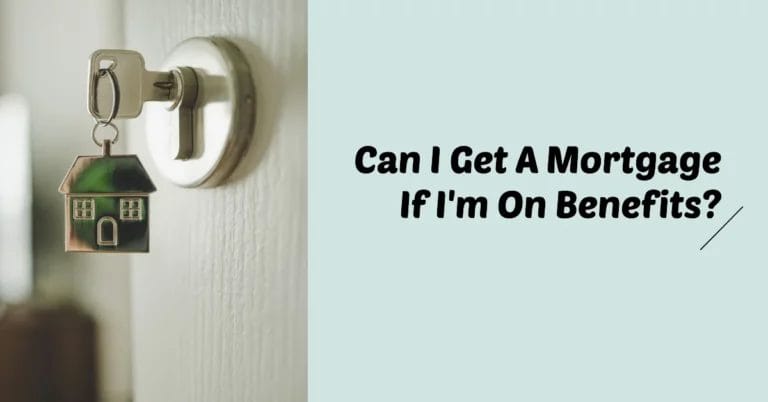From Investment To Residence: Changing From A Buy-To-Let To A Residential Mortgage
Life’s journey isn’t always a straight line, and neither is homeownership. Many individuals begin by investing in buy-to-let properties, only to find themselves yearning for a place they can call home. In this article, we explore the pivotal decision to change from a buy-to-let to a residential mortgage, offering guidance on how to navigate this transformative step in your real estate journey.
Key Takeaways:
- Discover the possibilities and advantages of changing from a Buy-to-Let to a Residential Mortgage, including potential legal and financial benefits.
- Explore common reasons for making the switch.
- Follow a practical four-step guide for a smooth transition, including assessing intentions, checking lender policies, evaluating financial stability, and consulting a mortgage broker.
What is a Buy-to-Let Mortgage?
A buy-to-let mortgage is simply a financing arrangement designed for properties acquired with the sole purpose of renting them out to tenants, involving a lender providing funds to landlords or investors for this specific use.
What is a Residential Mortgage?
A residential mortgage is a loan agreement tailored for properties acquired with the primary intention of personal occupancy, where a lender provides funds to individuals or families for purchasing or refinancing their own homes.

Can I Change from a Buy-to-Let to a Residential Mortgage?
The short answer is… YES! Between preparing documents, assessing credit reports and other eligibility criteria you can transition from a buy-to-let to a residential mortgage. Not only is it a legal requirement to do so if you have the intention of living in the property, but residential rates also tend to be more competitive.
Why Do People Make the Switch from Buy-to-Let to Residential?
After a separation:
Following a breakup, especially with children involved, one partner often wishes to remain in the family home, while the other seeks a new residence. If you own a property, consider moving back into it in this situation.
Closer to work:
If you’ve invested in an inner-city property for rental purposes but now want to live closer to your workplace due to lifestyle changes, it’s a practical option to move into your city property.
Children growing up:
As your children reach adulthood and need a place to live, having properties near universities or workplaces can be useful. Transitioning from a buy-to-let to a residential mortgage is necessary if you intend to let your children reside in these properties.
Downsizing:
Once your children move out, downsizing from your larger family home to your rental property can be an attractive choice. This allows you to sell the family home or convert it into a rental property for additional income.
Benefits of Changing from a Buy-to-Let to a Residential Mortgage
- Competitive Rates: Residential mortgages often come with more competitive interest rates compared to buy-to-let mortgages, potentially leading to lower monthly payments and long-term savings.
- Legal Compliance: Switching to a residential mortgage aligns with legal requirements if you intend to live in the property. Adhering to these regulations ensures compliance and avoids potential legal issues associated with incorrect usage.
- Flexibility in Use: A residential mortgage allows you the flexibility to use the property for personal occupancy, meeting lifestyle changes or family needs, rather than being restricted to rental purposes.
- Potential Tax Benefits: Moving into the property and making it your primary residence may result in exemptions or reductions in capital gains tax, providing potential financial advantages over maintaining it as a buy-to-let investment.
- Improved Financing Options: Lenders may offer more favourable terms, such as lower Loan-to-Value (LTV) ratios, for residential mortgages. This can lead to a lower deposit requirement and potentially better financing terms, easing the financial burden of property ownership.
4 Steps to Make the Transition Possible

Step 1. Assess Your Intentions
Before making any changes, evaluate your intentions. Are you planning to move into the property yourself? If your initial purpose was to generate rental income and you now intend to make it your primary residence, you’re on the right track and now you’re in the right place.
Step 2. Lender Policies
Reach out to your current lender to ask about switching from a buy-to-let to a residential mortgage. Some lenders allow it, but there might be certain conditions and fees. A good broker can give you a quick idea of your lender’s policy. Friendly advice for a smoother transition!
Step 3. Evaluate your Financial Situation
Ensure that you have the financial stability to meet the requirements of a residential mortgage. This typically involves providing a deposit, passing credit checks, and meeting income criteria. Use credit reference agencies like Equifax and Experian for this.
Step 4. Consult a Mortgage Broker
Seek advice from an experienced broker. They should guide you throughout the entire transition process, helping you understand all the options available to you and assisting you in finding the right residential mortgage that suits your needs. No hassle, no confusion.
How to Make the Switch from a Buy-To-Let to a Residential Mortgage?
The easiest way to switch is by remortgaging with your current lender. If they don’t allow buy-to-let to residential switches, consider talking to an experienced broker to explore alternative options.
They should help you find the right lenders who have a history in assisting people make the switch from a buy-to-let to a residential mortgage. Do not stress, we are here to help.
At Expert Mortgage Brokers, we specialise in helping our clients make the transition from a buy-to-let mortgage to a residential one with ease and confidence. Our expertise in this area sets us apart and ensures that you can navigate the switch smoothly. Why are we the right brokers for you?
We…
- Have expert knowledge of the mortgage market.
- Offer customised solutions, tailored to your unique circumstances.
- Provide professional guidance throughout the whole transition process.
- Have access to an established network of lenders.
- Pride ourselves in providing clear and concise communication to save you both time and stress.
What do we need from you?

Changing the structure of your mortgage from a buy to let to a residential one can be made extremely easy.
Typically, taking out a mortgage requires a lot of paperwork. To make this process as seamless as possible, we advise our clients to get these documents in check beforehand:
- Proof of identity (Valid driver’s licence/passport)
- Proof of address (Bank statement/utility bill)
- Proof of income (3 months’ payslips)
- Proof of equity (Redemption statement from current lender)
- Last 3 months bank statements
If you have any questions about these documents and where to get them from, contact one of our brokers and they’ll assist you right away.
Conclusion
In conclusion, transitioning from a Buy-To-Let to a Residential Mortgage is a streamlined process with key considerations and steps outlined in this user-friendly guide. Understanding the differences between these mortgage types and leveraging the expertise of Expert Mortgage Brokers ensures a seamless switch. The provided checklist for essential documents, along with insights into legal and tax implications, aids in making informed decisions. For those seeking a user-friendly approach to homeownership changes, this guide offers valuable insights for a hassle-free switch. Explore the steps, consult the experts, and embark on your journey from investment to residence with confidence.






